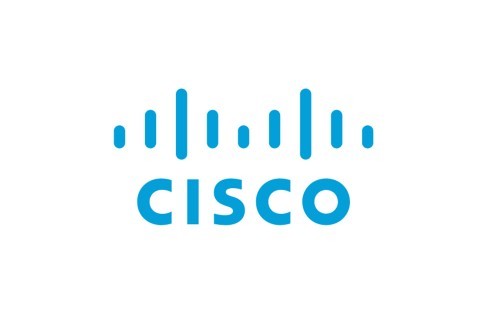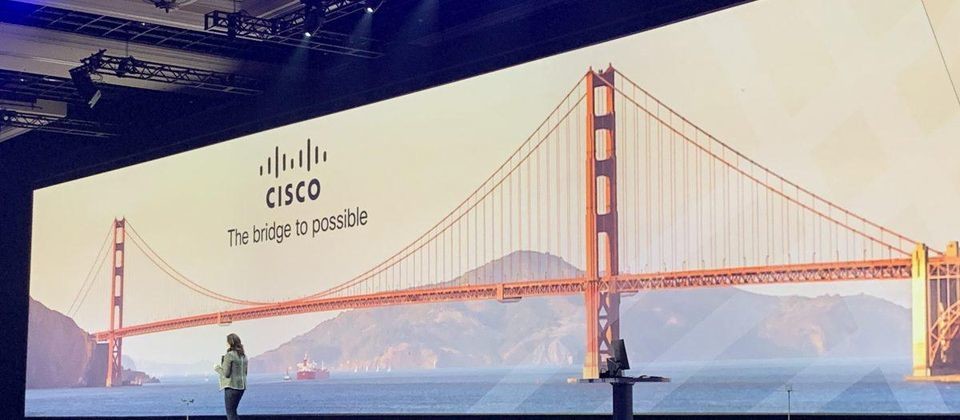In 'Part One: How a Brand Slogan Drives Professional B2B Communications', we discussed how an effective brand slogan guides professional communications at all levels. With one, big clear idea making one, big, clear impression across all touchpoints, the target audience recognizes and trusts the brand for that key differentiation or promise identified in the slogan.
Now, in Part Two, we’re going to demonstrate how this works in real life with a best-practice example. Among a wide range of contenders popular among B2B companies, including Intel and IBM, we’ve chosen to look at Cisco, a U.S. conglomerate focused on networking communication technologies.
Cisco demonstrates how an effective brand slogan guides the clear, consistent presentation of a company’s competitive advantages in the marketplace. Its one key message drives everything from social media bios to product communications. Without this all-important consistency, a brand slogan will never be more than just another, empty corporate tagline on an annual report.
The Slogan
For B2B companies, which target a professional audience, the brand slogan should ideally relate directly to the brand’s differentiation or promise. The message has to be authentic and relevant and it should inspire people, or at least interest them.
 Source:Cisco官網
Source:Cisco官網
Cisco’s brand slogan defines the company as “The Bridge to Possible.”

 Source: Cisco, Forbes
Source: Cisco, Forbes
The word “bridge” speaks directly to an audience specializing in networking and communications, as a common industry term. In fact, Cisco organizes all its core brand elements around this idea of being the “bridge,” because it fits neatly with Cisco’s hometown San Francisco and the city’s iconic Golden Gate Bridge.
“Possible” indicates the advanced nature of Cisco’s offering, and the company’s focus on connecting its audience to new opportunities. As a whole, Cisco’s key message states that its advanced technologies help its partners and clients achieve ambitious objectives within networking communications.
Brand Communications
It’s difficult to convey significant depth or breadth of meaning within one short tagline alone. To ensure the target audience really understands what the brand has to offer, and what it aims to achieve, supporting brand communications deepen the message in the slogan.
Cisco’s slogan is very high-level, meaning there’s lots of ways the ideas of “bridge” and “possibility” can be adapted into introductions suitable for various touchpoints. On Facebook, Cisco’s About section states: “Cisco helps companies seize the opportunities of tomorrow by proving that amazing things can happen when you connect the unconnected.” While on LinkedIn, the description changes slightly: “Cisco enables people to make powerful connections — whether in business, education, philanthropy, or creativity.” These examples directly align with the idea in the slogan, but add more detail based on their different audiences.
Elsewhere, additional brand messages tell Cisco’s partners “The bridge to possible” is only possible with you.” In relation to its CSR commitment to boost digital equity, Cisco says: “When we connect, anything is possible.” This consistency in messaging leaves the audience in no doubt what Cisco is all about — being The Bridge to Possible.
Product and Solutions Communications
Brand and offering do not exist in separate worlds, especially for B2B companies. When it comes to product and solutions-level communications, the brand’s key message shouldn’t suddenly disappear. Instead, the idea within the slogan frames the advantages of the company’s offering.
Cisco’s product and solutions-level communications describe how its offering acts as the “bridge” to make certain outcomes or benefits “possible”. For example, on its LinkedIn page, Cisco states its “offerings are used to create the Internet solutions that make networks possible.” The clever part is that by making new possibilities the focus, Cisco can essentially talk about any desirable outcome and still link back to the key message.
The best effect is found when Cisco can really push its differentiated “bridge” concept for individual products or solutions. For example for its data center and cloud networking solutions, Cisco commits to “Take your network to where the data is.”
Ongoing Marketing
Day-to-day marketing content should also align with that one big idea in the brand slogan to maintain that consistency across every single touchpoint. While this might sound restrictive, a strategically developed key message should provide enough scope and flexibility for the marketing team to do their day-to-day jobs, while providing the necessary focus. Without that focus, the target audience will be overwhelmed by a variety of messages, and so form their own ideas about the brand, which are often inaccurate or incomplete.
At Cisco, its slogan gives its marketing team wide scope to create all kinds of thought leadership content about digital transformation and the future of networking. It’s not necessary to keep repeating the words within the slogan, but to align with the concept of making new possibilities accessible.
Meanwhile for its CSR efforts, Cisco talks about “Building the bridge to the future of healthcare”; uses its #BeTheBridge hashtag to promote initiatives related to digital equity on social media; and it is “Bridging the Gap” when it comes to workplace inclusivity and diversity.
Final Thoughts
Cisco’s best-practice example demonstrates how focused messaging and disciplined execution are vital to professional and clear communications that accurately represent a brand in the market. For readers seeking more examples, Intel and IBM are other professional B2B brands worth learning from.
Yet what usually goes unseen is the insightful and impactful strategy behind every carefully planned external image. Without understanding how the brand is differentiated, without clarifying why the brand exists at all, without identifying the right target audience, there can be no focus to a brand’s communications. And with no focus, external audiences quickly get confused and/or lose interest.
One brand slogan can’t do all this heavy lifting by itself. It takes a coordinated effort across all touchpoints to ensure the brand’s differentiation is effectively communicated consistently and professionally.



